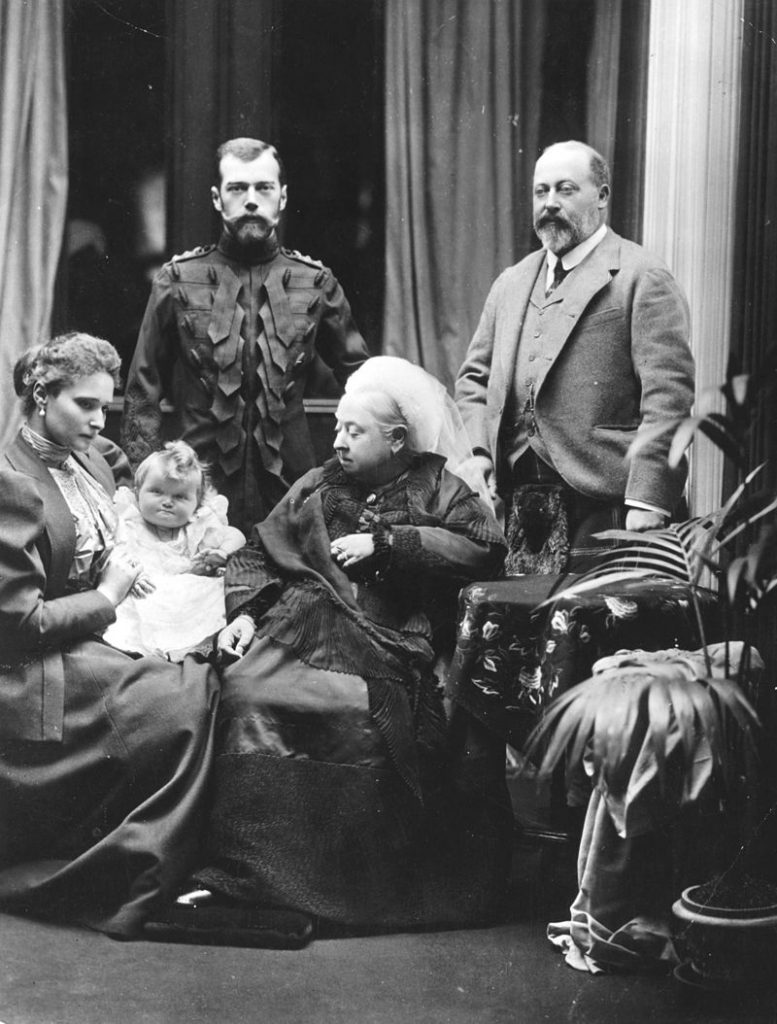Why Men Button Their Suits Like That

“Sometimes, always, never.” Men’s suits typically come with two or three buttons, and — especially when you’re young — it may be hard to remember which buttons should be buttoned and which should remain unbuttoned. For the two-button variety, it’s easy — button the top if you’re standing, open it up when you sit. For three, though, it can be hard to remember. “Sometimes, always, never” is a mnemonic device some use to remember what to do. The top is up to you — whatever feels comfortable or looks better is fine. The middle is always buttoned while standing, but the bottom? Just like in the two-button context, the rule is the same: Never button that one.
The rule makes the bottom button seem wasteful — what’s the point of having a button you never button?
There are a few explanations here, but the most commonly agreed-upon one places the blame on King Edward VII of the United Kingdom.
Edward reigned from 1901 until his death in 1910. But before he was the king, he was, at least occasionally, a bottom button buttoner. Here’s a picture from 1896 — Edward is the guy in the suit standing to the right. (His mother, Queen Victoria, is seated in front of him — the others are Tsar Nicholas II of Russia, his wife Alexandra, and their daughter Olga.) You’ll note, if you look closely, that the button on Edward’s waistcoat — the vest-like garment under the suit jacket — is buttoned.

But that changed by the time he became the ruling monarch. Click this link to see a colorized picture of King Edward from 1902, a year into his reign, and that final button is most definitely unbuttoned. Royals are typically very attuned to what they’re wearing, given their place in the public eye, so this seems intentional. It’s an odd choice for a king to make: why go against logic and tradition, only to risk coming off as sloppy?
Most likely, Edward kept the bottom button unbuttoned because he had too much waist for his waistcoat to handle. As Mental Floss relays, “Edward liked to eat. A lot. On a typical day, he’d mow down a plateful of bacon and eggs for breakfast, a tower of roast beef and shortcakes for lunch, and a 12-course dinner.” His waistcoats probably weren’t all that comfortable, so to give his gut a bit more space, he just kept that bottom buttoned undone.
For his subjects, this proved a difficult situation. Norms of the day said to button all the way down, but no one wants to fat-shame a monarch. So instead, Edward’s subjects did as he did. Or, to be blunt about it, let’s turn to the explanation offered by GQ Fashion Director Robert Johnston: “When the future Edward VII was Prince of Wales he became so fat that he couldn’t do up the bottom button on his waistcoat so court followed suit to make him feel better about his body image.” That spread from waistcoats to suits jackets, too. (There’s an alternative explanation for the latter garment — suit coats replaced horse-riding jackets, which are longer and effectively don’t have a “bottom” button — but, either way, Edward VII was the first notable person to sport an unbuttoned bottom button.)
Today, the issue isn’t about girth or horses. Over the last century, the “never button the bottom button” rule has become the norm and has been incorporated into suit designs themselves. According to the Art of Manliness, “doing so messes up the intended tailoring and flare offered by the middle button,” and no one wants that.
Bonus fact: Men’s suit coats often have buttons on their sleeves but no buttonholes. They’re probably just for show, but the original intent of may have been practical. War is a dirty business — sweat, blood, and tears — and, as the Straight Dope half-jokes, “no one had the foresight to provide the troops with Kleenex with which to mop their brows.” Soldiers used their sleeves instead and, to stop this, Prussian ruler Frederick the Great had tailors add buttons to the sleeves. This way, continues the Straight Dope, “soldiers would scratch their faces open every time they tried to use their coats for a handkerchief,” and sooner or later, break that habit.
From the Archives: Why Women’s Shirts Button Backward: Or why men’s do, depending on one’s perspective.
